芯出し・段取り計測
プローブ計測を駆使した自動段取りにより、手動よりも 最大で 10 倍の高速化が可能です。
Productive Process Pyramid™ の芯出し・段取り計測層の制御では、切削を開始する前に機械、パーツ、工具の関係を設定します。これらの自動化された予防型制御により、最初から確実に正確な切削を行えます。
最初から正確な切削を確保
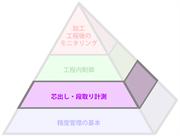 Productive Process Pyramid の芯出し・段取り計測層では、パーツの場所、工具のサイズ、機械のオフセットなどの偏差の原因に対応し、加工部をパーツの実際の場所に位置決めします。
Productive Process Pyramid の芯出し・段取り計測層では、パーツの場所、工具のサイズ、機械のオフセットなどの偏差の原因に対応し、加工部をパーツの実際の場所に位置決めします。
切削開始直前に適用する予測型制御です。
工具計測で確立できる項目
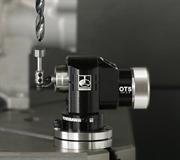 主軸ゲージラインからの工具長 (高さオフセットの算出および工具長の指定公差チェックのため)
主軸ゲージラインからの工具長 (高さオフセットの算出および工具長の指定公差チェックのため)- 回転時の直径 (工具サイズのオフセット設定のため)
パーツ計測で確立できる項目
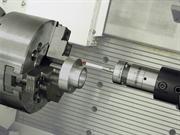 パーツの固有情報 (適切な NC プログラム選択のため)
パーツの固有情報 (適切な NC プログラム選択のため)- 基準形状の位置 (ワーク座標系設定のため)
- ビレット/ワークのサイズ (面位置と粗切削シーケンス判断のため)
- 機械軸に対するパーツの向き (座標回転設定のため)
段取り・芯出しで確立できる項目
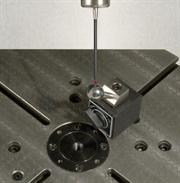 回転軸、インデキサ、パーツの位置決めと固定に必要な治具のアライメント
回転軸、インデキサ、パーツの位置決めと固定に必要な治具のアライメント- インデキサの回転の中心位置、治具の参照位置
予測型制御
プローブ計測に基づく自動芯出しにより、手動よりも 10 倍速く段取りを行うことができ、切削加工により多くの時間を充てることが可能です。
計測に要する時間が明確なため、それに応じて計画を立てられます。
機上計測を使用するワーク芯出しおよび段取り工程は、プログラムですべて制御が可能です。そのため、熟練した作業員が計測、計算、オフセット設定をする必要がなくなります。
レニショーのワーク計測プローブ、工具計測システム、Productivity+™ は、金属切削作業を高い繰り返し精度で高速自動設定するために不可欠なツールです。
高生産性プロセスパターン
-
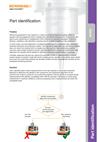 Educational article: (AP200) Productive Process Pattern: Part identification [en]
Educational article: (AP200) Productive Process Pattern: Part identification [en]
Productive Process Pattern™ from the process setting layer of the Productive Process Pyramid™. Use a workpiece inspection probe to take measurements on the raw material (or previously machined features) to determine the identity of the component, the component alignment on the machine tool, and/or to check for non-conforming material.
-
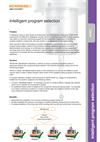 Educational article: (AP201) Productive Process Pattern: Intelligent program selection [en]
Educational article: (AP201) Productive Process Pattern: Intelligent program selection [en]
Productive Process Pattern™ from the process setting layer of the Productive Process Pyramid™. Use a workpiece inspection probe to determine whether the component blank loaded in the machine tool is the correct one for the machining program. Where a unique, identifiable feature exists on the component (or one can be added) a probe may be used to make a logical decision about which of the available cutting programs should be used.
-
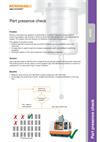 Educational article: (AP202) Productive Process Pattern: Part presence check [en]
Educational article: (AP202) Productive Process Pattern: Part presence check [en]
Productive Process Pattern™ from the process setting layer of the Productive Process Pyramid™. Use a workpiece inspection probe to identify which components are actually present and should be machined. The probing results can be used to control program logic that determines whether to machine a component or to skip machining if no part is present.
-
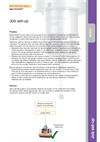 Educational article: (AP203) Productive Process Pattern: Job set-up [en]
Educational article: (AP203) Productive Process Pattern: Job set-up [en]
Productive Process Pattern™ from the process setting layer of the Productive Process Pyramid™. Use a workpiece inspection probe to automatically measure the location of the component and update the relevant offset. Where appropriate, also use the probe to update the orientation of the component using a controller function or a rotary axis.
-
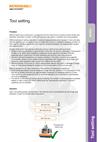 Educational article: (AP204) Productive Process Pattern: Tool setting [en]
Educational article: (AP204) Productive Process Pattern: Tool setting [en]
Productive Process Pattern™ from the process setting layer of the Productive Process Pyramid™. Use a tool setting probe mounted within the machine tool to automatically set the length and diameter of each tool before machining begins.
-
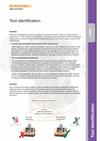 Educational article: (AP205) Productive Process Pattern: Tool identification [en]
Educational article: (AP205) Productive Process Pattern: Tool identification [en]
Productive Process Pattern™ from the process setting layer of the Productive Process Pyramid™. An on-machine tool setting system is used to establish tool length and diameter offsets when replacing tools. As a safety check, the measured values are compared against reference dimensions with a tolerance applied: if the tool length or diameter deviation is greater than the allowed tolerance, the process will stop safely before any machining takes place or any damage can occur.
-
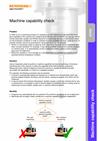 Educational article: (AP206) Productive Process Pattern: Machine capability check [en]
Educational article: (AP206) Productive Process Pattern: Machine capability check [en]
Productive Process Pattern™ from the process setting layer of the Productive Process Pyramid™. Use a workpiece inspection probe to perform a machine capability test before machining. Commence machining only if the machine is within the capability limits defined for the component. Measuring known reference features shows the machine is capable of positioning itself accurately and repeatably, or if there is a capability problem.
-
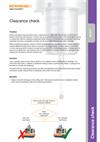 Educational article: (AP207) Productive Process Pattern: Clearance check [en]
Educational article: (AP207) Productive Process Pattern: Clearance check [en]
Productive Process Pattern™ from the process setting layer of the Productive Process Pyramid™. Use a workpiece inspection probe to test critical sections of a toolpath where interference is possible. The probe will stop when a collision is detected making it safe to perform this check: a cutting tool is not able to provide this feedback. Proceed with the machining process only after all potentially hazardous areas have been tested and probe results indicate that no obstacles exist within the tool path.
-
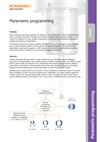 Educational article: (AP208) Productive Process Pattern: Parametric programming [en]
Educational article: (AP208) Productive Process Pattern: Parametric programming [en]
Productive Process Pattern™ from the process setting layer of the Productive Process Pyramid™. Use a workpiece inspection probe to measure features which vary between parts within a given family and allocate macro variables for those feature measurements. Different parts can be produced by a family-specific rather than a part-specific program by controlling features that vary between parts using logic based on probe measurement results.
-
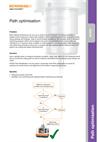 Educational article: (AP209) Productive Process Pattern: Path optimisation [en]
Educational article: (AP209) Productive Process Pattern: Path optimisation [en]
Productive Process Pattern™ from the process setting layer of the Productive Process Pyramid™. Use a workpiece inspection probe to measure workpiece condition. Apply logic based on the measured stock size to control the cutting path so that air cutting is eliminated and machining moves always cut metal.
-
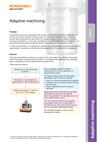 Educational article: (AP210) Productive Process Pattern: Adaptive machining [en]
Educational article: (AP210) Productive Process Pattern: Adaptive machining [en]
A manufacturing process may dictate that the form of a finished component is dependent on the form of the input material for that process. In these circumstances, it is necessary to measure the form of the input component and use the measurement to produce a customised cutting program which is unique to that component.
資料
-
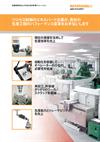 カタログ: パンフレット: 生産効率を向上させるための計測ソリューション
カタログ: パンフレット: 生産効率を向上させるための計測ソリューション
プロセス制御のエキスパート企業が、貴社の生産工程のパフォーマンス変革をお手伝いします
-
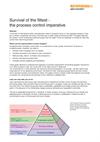 White paper: Survival of the fittest - the process control imperative [en]
White paper: Survival of the fittest - the process control imperative [en]
In tough times, manufacturers focus on reducing their operating costs, but may not be able to afford to spend their way out by buying more productive machinery. With that pathway closed, what are the opportunities for radically reducing costs without replacing existing machines? This paper explores four areas where substantial savings can be found if firms are prepared to change the way they control their machining processes.
-
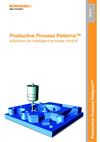 Educational article: (AP010) Productive Process Pattern: Productive Process Patterns™ [en]
Educational article: (AP010) Productive Process Pattern: Productive Process Patterns™ [en]
Introduction to the Productive Process Patterns™ - solutions for intelligent process control within manufacturing













